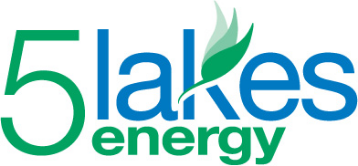Michigan’s Clean Energy Economic Comeback: How Local Economies in Michigan Are Benefitting from State and Federal Climate Policies
Analysis by 5 Lakes Energy
The state of Michigan is experiencing an economic resurgence, powered by the Biden-Harris administration’s Inflation Reduction Act (IRA). Michigan now ranks among the top five for new clean energy projects and jobs, with a recent report revealing that the state has attracted 62 major projects, created 21,748 jobs, and secured over $26.6 billion in investments.
In November 2023, Governor Gretchen Whitmer signed a series of clean energy policies (a 100% clean energy standard, an increase to the state’s energy efficiency target, a policy to streamline the siting of renewable energy projects and others) aimed at accelerating this growth and investment while helping Michigan meet its climate goals.
This report examines the impacts of the IRA and Michigan’s 2023 clean energy policies combined at the state level and across its prosperity regions. Key highlights include:
-
Average annual household energy savings in Michigan of $297 by 2030, rising to $713 by 2040.
-
$15.6 billion in IRA investments to the state by 2030, reaching $30.7 billion by 2040.
-
A 65% reduction in Michigan’s power sector emissions by 2030, increasing to 88% by 2040.
-
$7.3 billion in public health savings for the state by 2030, with that figure rising to $27.8 billion by 2040.
The report also includes testimonials and case studies from businesses located in each prosperity region. The case studies, collected by the Michigan Energy Innovation Business Council, detail how local businesses will be able to leverage newly available state and federal investments to expand operations and boost quality job growth across the state.
The analysis highlights the significant economic, health, and climate benefits these policies are delivering across Michigan, plus strategies for the state to expand on these benefits through additional policies and programs.
